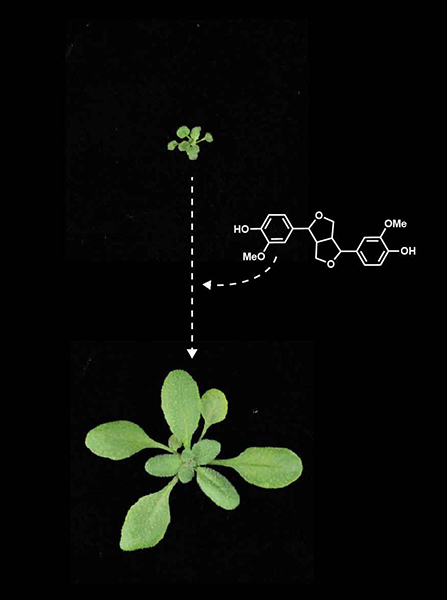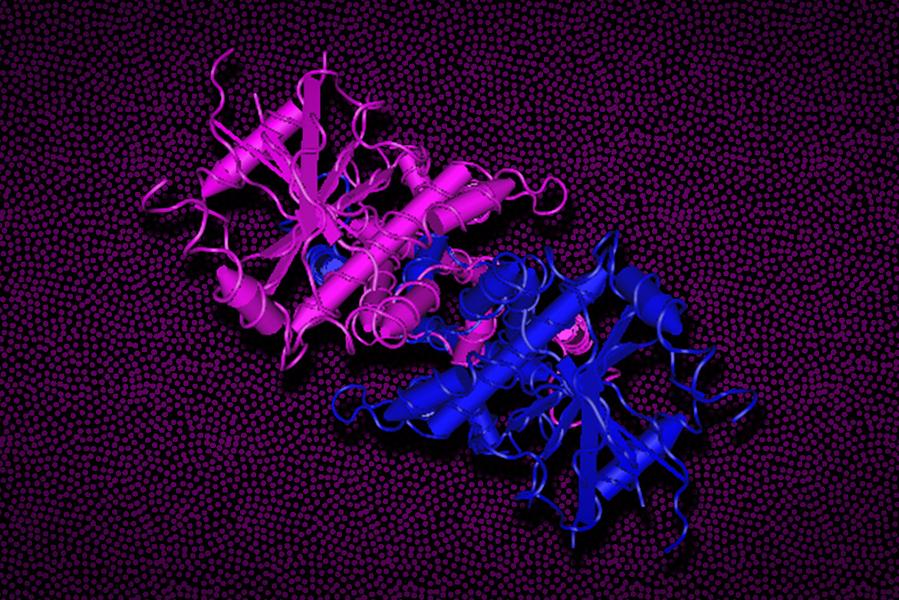2023-08-07 パデュー大学

Purdue researchers have found that they can rescue the growth deficit of Arabidopsis thaliana plants with altered lignin composition by adding pinoresinol. (Photo provided by Fabiola Muro-Villanueva)
◆研究者は、リグニンが環境や植物の発育に与える影響を理解するために、アラビドプシス・サリアタ種を用いて実験を行いました。リグニンの形成を導く経路への化学前駆体の流れを遺伝子操作によって制御し、成長に影響を与える化合物であるピノレシノールを発見しました。
◆この成果は、リグニンの合成が植物の成長と発育に及ぼす影響の理解を深め、バイオフューエルや家畜飼料の質向上にも貢献する可能性があるとされています。
<関連情報>
- https://www.purdue.edu/newsroom/releases/2023/Q3/experiments-identify-important-new-role-of-chemical-compounds-in-plant-development.html
- https://www.pnas.org/doi/10.1073/pnas.2216543120
ピノレジノール、フェルラ酸5-ヒドロキシラーゼを過剰発現したシロイヌナズナのフェニルプロパノイド変異体の発生表現型を救う Pinoresinol rescues developmental phenotypes of Arabidopsis phenylpropanoid mutants overexpressing FERULATE 5-HYDROXYLASE
Fabiola Muro-Villanueva, Leonard D. Pysh, Hoon Kim, Tyler Bouse, John Ralph, Zhiwei Luo, Bruce R. Cooper, Amber S. Jannasch, Zeyu Zhang, Chong Gu, and Clint Chapple
Proceedings of the National Academy of Sciences Published:July 24, 2023
DOI:https://doi.org/10.1073/pnas.2216543120
Significance
Plants with reduced lignin content are desirable because their biomass is more amenable to biofuel production; however, the engineering of lignin content and composition often results in impaired growth for unknown reasons. This phenotype could be caused by altered water transport through the xylem of low-lignin plants, but other models suggest that nonstructural phenylpropanoid metabolites could be involved in this phenotype. Lignans are products of phenylpropanoid metabolism that are widely distributed in the plant kingdom, but their biological functions have been understudied. Here, we present evidence suggesting that reductions in the content of the lignan pinoresinol and its precursor, coniferyl alcohol, are involved in the impaired growth phenotypes of low-lignin plants and also lead to perturbations in root development.
Abstract
Most phenylpropanoid pathway flux is directed toward the production of monolignols, but this pathway also generates multiple bioactive metabolites. The monolignols coniferyl and sinapyl alcohol polymerize to form guaiacyl (G) and syringyl (S) units in lignin, components that are characteristic of plant secondary cell walls. Lignin negatively impacts the saccharification potential of lignocellulosic biomass. Although manipulation of its content and composition through genetic engineering has reduced biomass recalcitrance, in some cases, these genetic manipulations lead to impaired growth. The reduced-growth phenotype is often attributed to poor water transport due to xylem collapse in low-lignin mutants, but alternative models suggest that it could be caused by the hyper- or hypoaccumulation of phenylpropanoid intermediates. In Arabidopsis thaliana, overexpression of FERULATE 5-HYDROXYLASE (F5H) shifts the normal G/S lignin ratio to nearly pure S lignin and does not result in substantial changes to plant growth. In contrast, when we overexpressed F5H in the low-lignin mutants cinnamyl dehydrogenase c and d (cadc cadd), cinnamoyl-CoA reductase 1, and reduced epidermal fluorescence 3, plant growth was severely compromised. In addition, cadc cadd plants overexpressing F5H exhibited defects in lateral root development. Exogenous coniferyl alcohol (CA) and its dimeric coupling product, pinoresinol, rescue these phenotypes. These data suggest that mutations in the phenylpropanoid pathway limit the biosynthesis of pinoresinol, and this effect is exacerbated by overexpression of F5H, which further draws down cellular pools of its precursor, CA. Overall, these genetic manipulations appear to restrict the synthesis of pinoresinol or a downstream metabolite that is necessary for plant growth.


